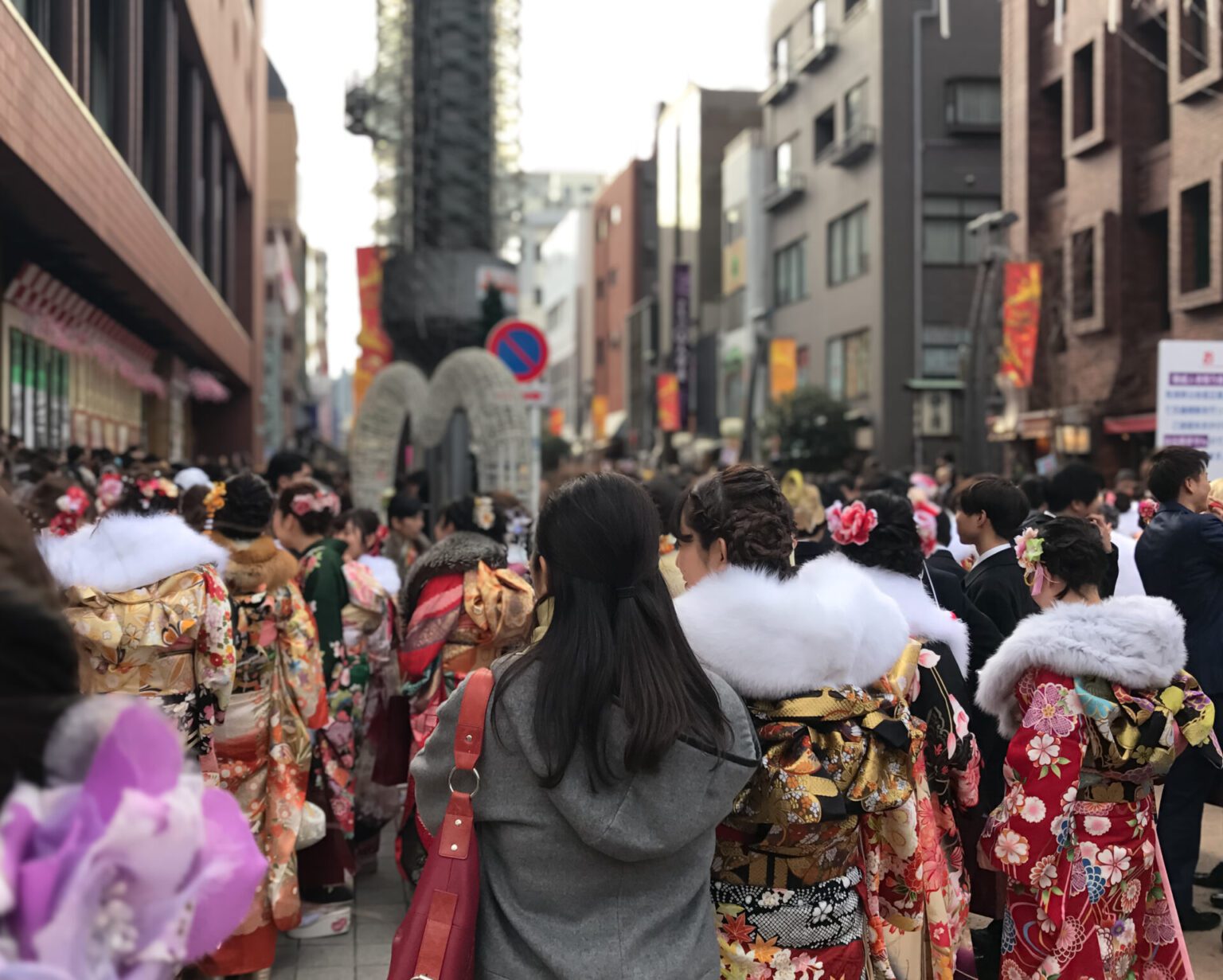For me, the new year conjures up memories of Coming of Age Day (成人の日 Seijin no Hi). In Japan, Coming of Age Day occurs on the second Monday in January.
It’s a day that celebrates those who reached the age of majority the previous year, where participants gather at their city hall to listen to speeches and receive information about becoming an adult in Japanese society.
Coming of Age in Japan

And in 2022, the age of majority was lowered from 20 to 18.
It includes a ceremony, speeches, and a bag full of ‘how to adult’ manuals. Not to mention participants dressed in lavish kimono and stylish suits.
In our case of course, the age of majority was 20, which remains the age that those in Japan can drink and smoke. Those who turn 18 are in turn able to vote and get a driver’s license, similar to the US.
The Day of the Coming of Age Ceremony

We were lucky enough to get to participate in the Coming of Age Ceremony (成人式 seijin shiki) as 20 year-olds who lived in the Asakusa area.
They play music as you file into the community center and wait for the ceremony to begin.
I’ll never forget they played Sakanaction’s “Shin Takarajima” or ‘New Treasure Island’ – a song and band I was introduced to just that year, which felt perfect for the occasion.
Once the ceremony begins, the MC’s give speeches about how entering adulthood is something to cherish, and emphasize the importance of living smartly, kindly, and healthily – all in Japanese of course.
Ours even featured a performance by a diabolo player to raise the excitement!
Sakanaction’s “Shin Takarajima” Music Video
Renting Kimono for the Occasion

Since you have to register your residence at the city hall when you move in, they automatically invite you to the ceremony.
But renting the kimonos was a personal choice we made for the occasion. It was my first time wearing kimono, and while it’s admittedly not the most comfortable clothing, it is beautiful.
To rent a kimono, you can call or book online in advance, and just be sure to show up on time.
I can remember rushing through the streets to make it to our appointment, electric with nerves and excitement.
Plus it was a brisk day, and our feet were freezing after putting on the sandals (下駄 geta). Yet it was so worth it.
Luckily the shop we went to was nearby in Asakusa and the ladies working there were able to help us with hair too, and we were able to make it perfectly on time.


At the venue, everyone’s beautiful kimonos, furs, and accessories stood out in the Winter weather.
While I wouldn’t change a thing about our experience, I do think those in the know were able to procure really gorgeous outfits for the ceremony.
Women will often rent or borrow a relative’s kimono, and you could tell some of the kimono were extremely high-quality and must have been very expensive.
Thoughts on the Ceremony

While I do think their materials on becoming an adult, ranging from topics like how to be a considerate neighbor, manage money, and sex education, come a bit late, I did appreciate that it was put together at all. Imagine getting a manual on adulthood in the US!
I love that the Coming of Age holiday and ceremony places such importance on becoming an adult.
It gives everyone the chance to feel the weight of coming of age, along with the newfound freedoms it offers.
Plus, it gives people a chance to mingle and revel in the occasion, an experience I think we lack in the US (unless you celebrate a quinceañera, bat mitzvah, or something similar).
The closest I’ve come to a similar experience was honestly our wedding!
I’m honored to have participated and to have been a part of the exciting energy that day. Plus having the experience of getting ready with friends and wearing kimono was a blast.
Sometimes, there really is something to say for traditions and ceremonies.




